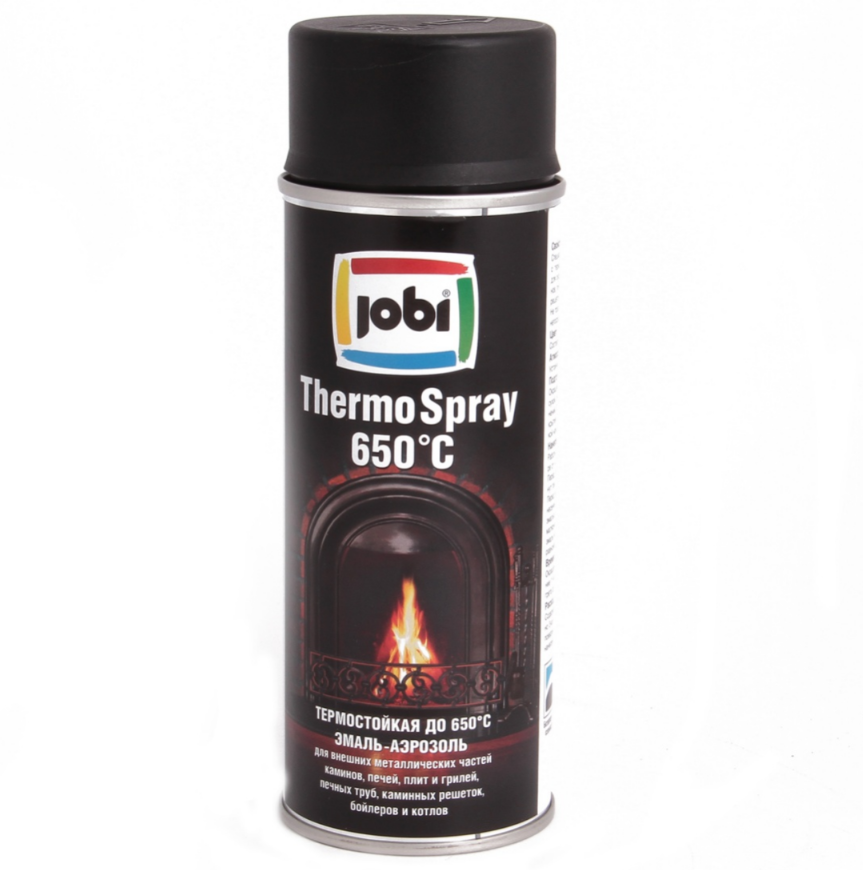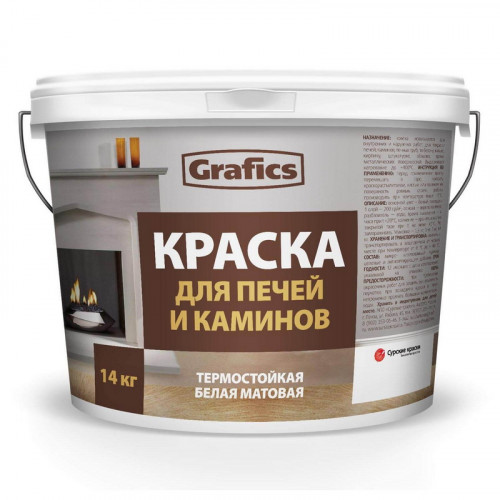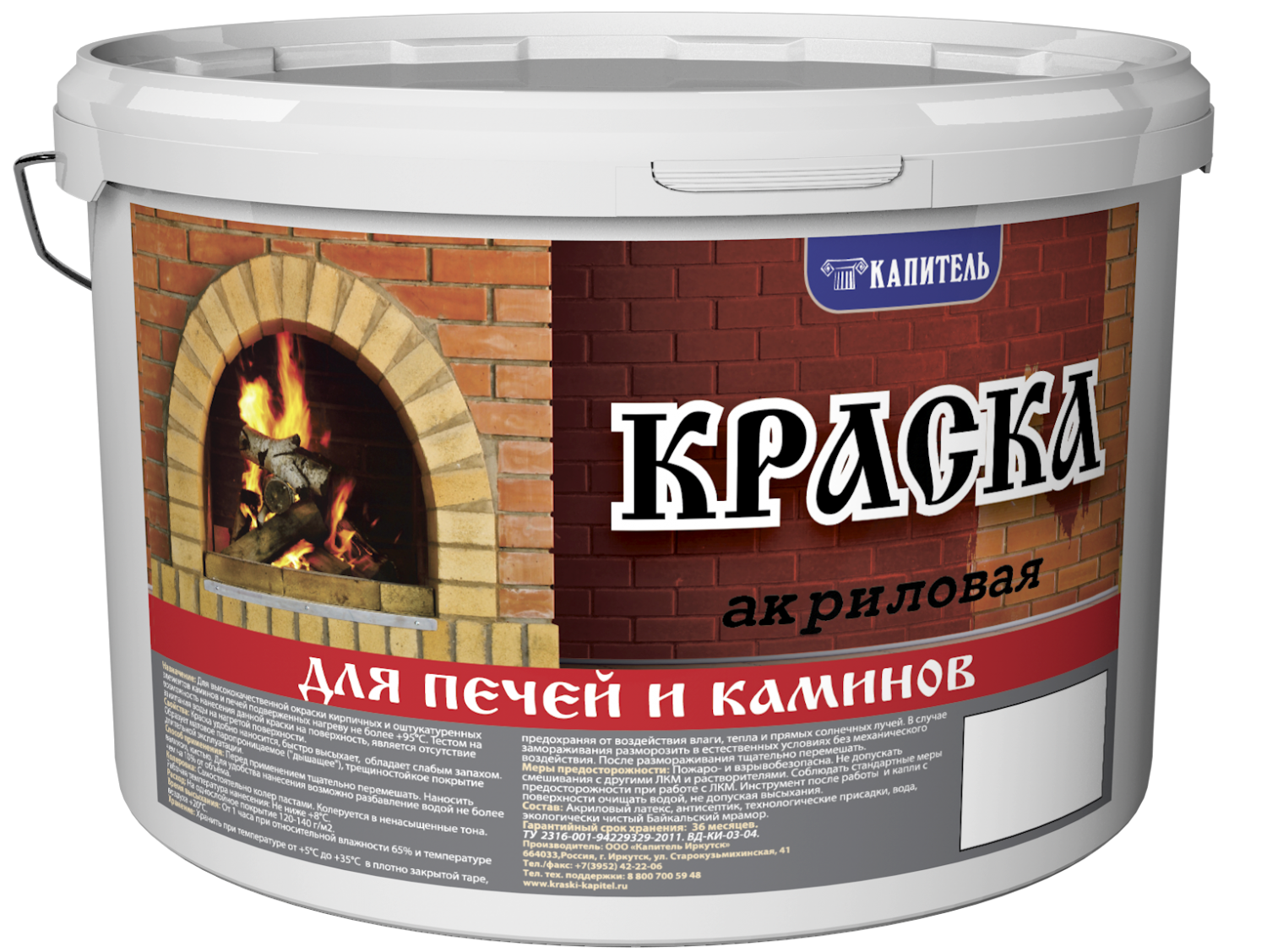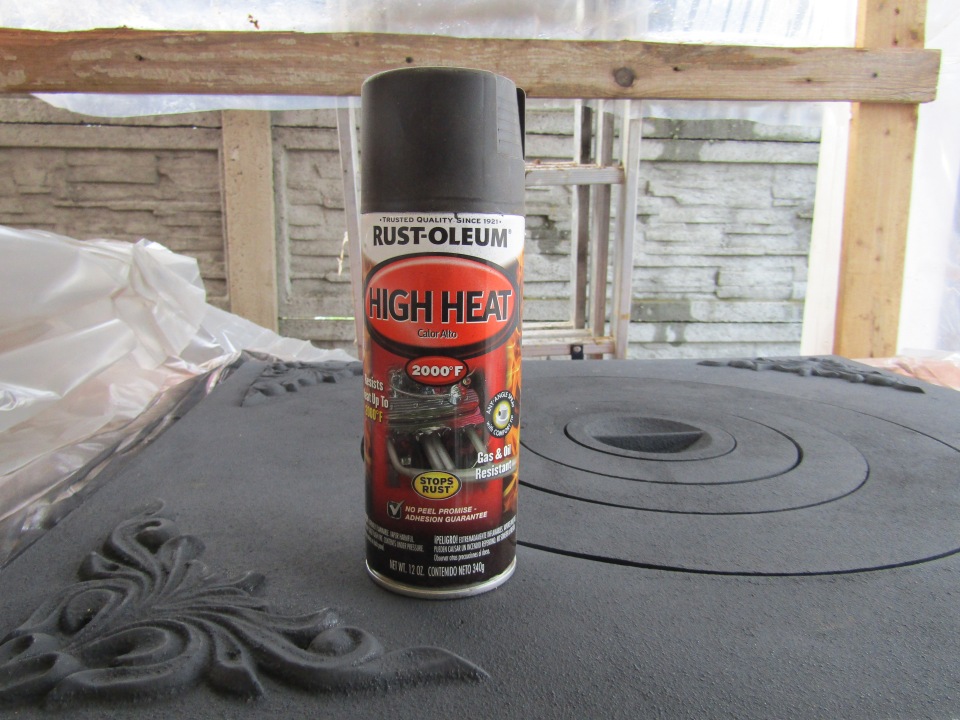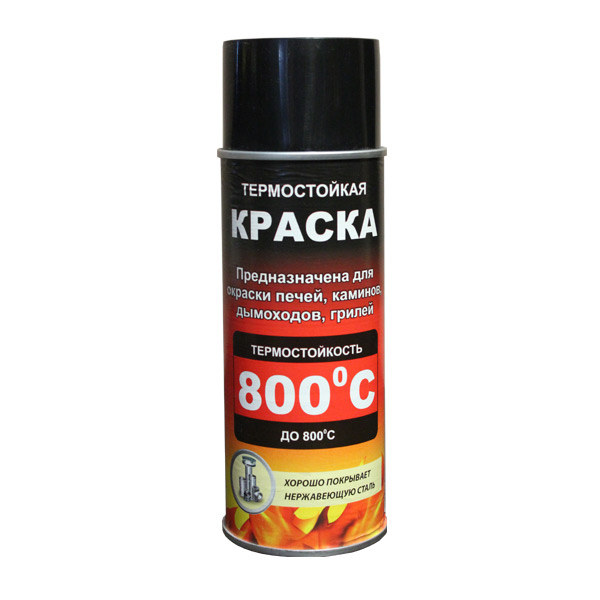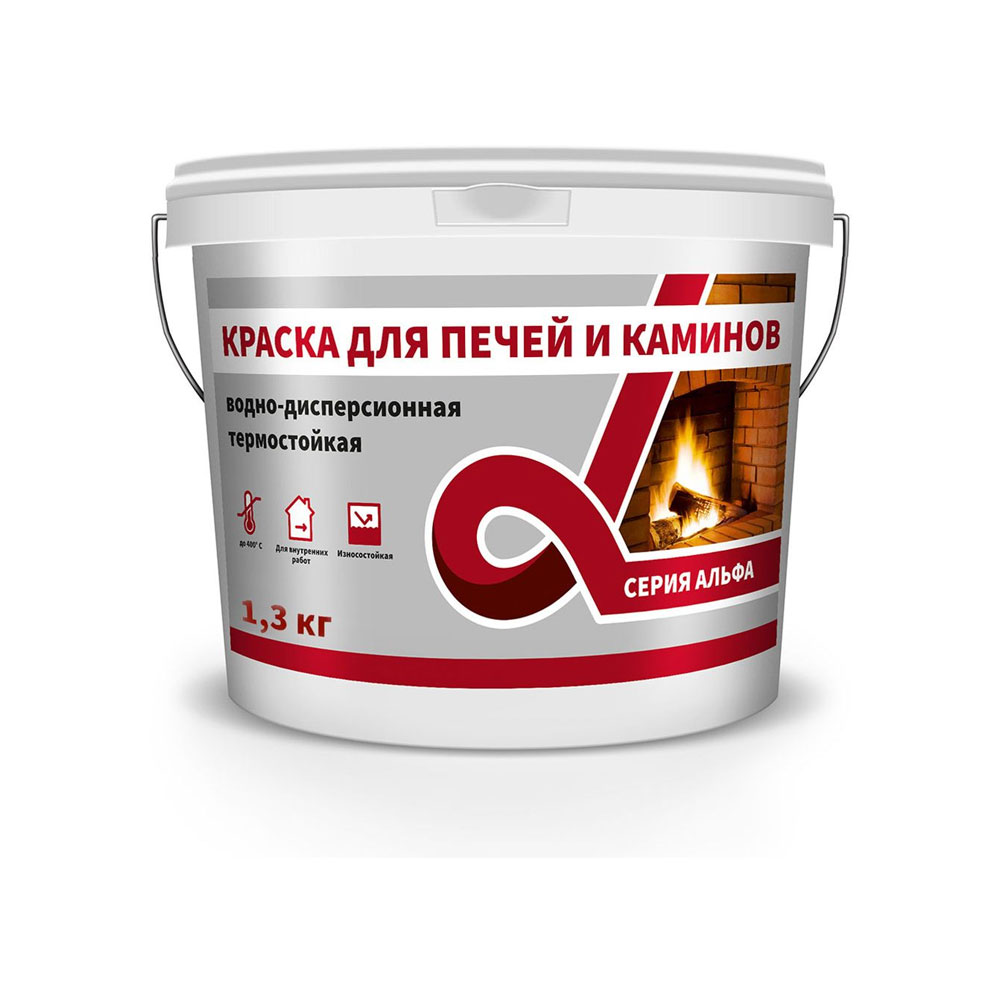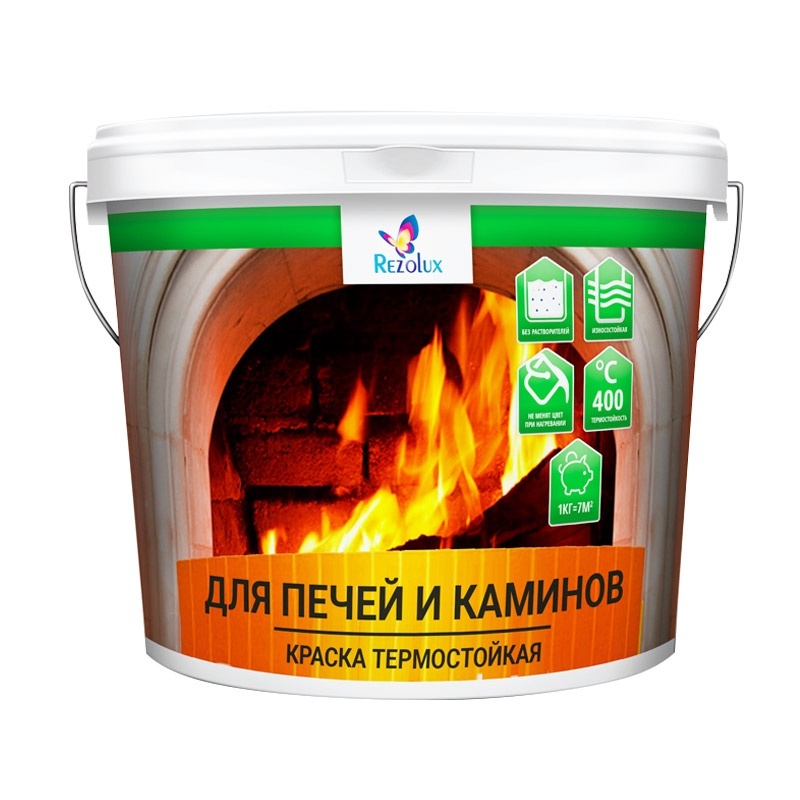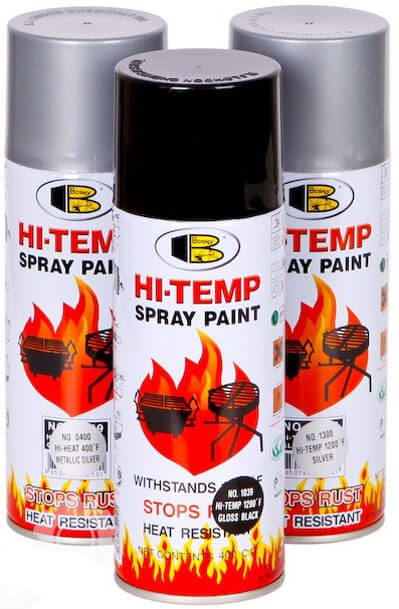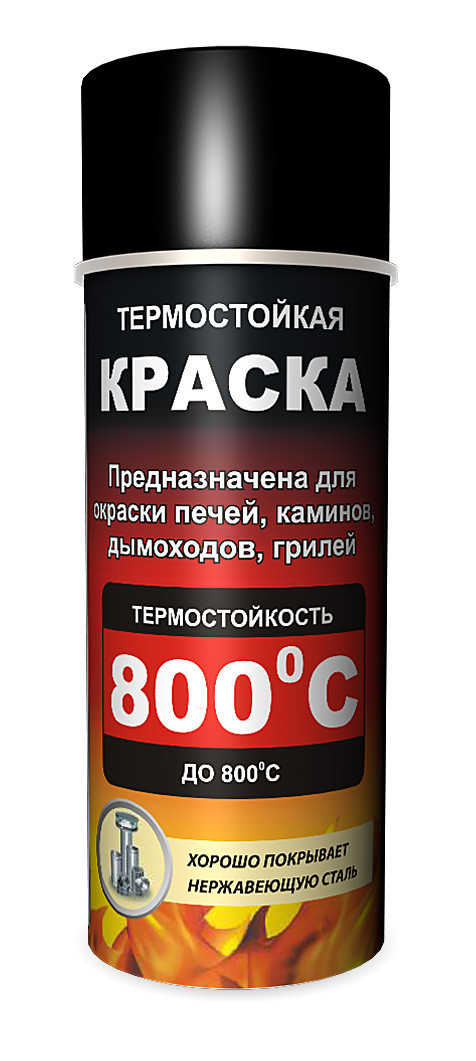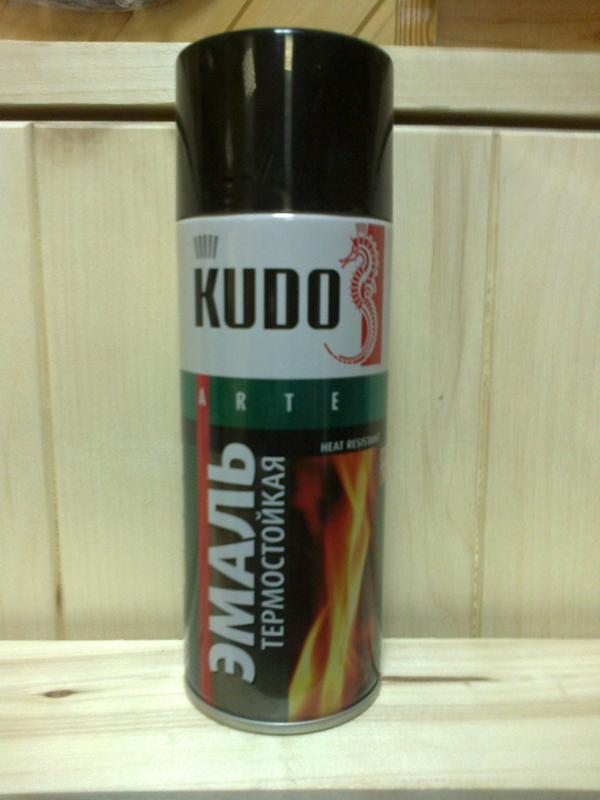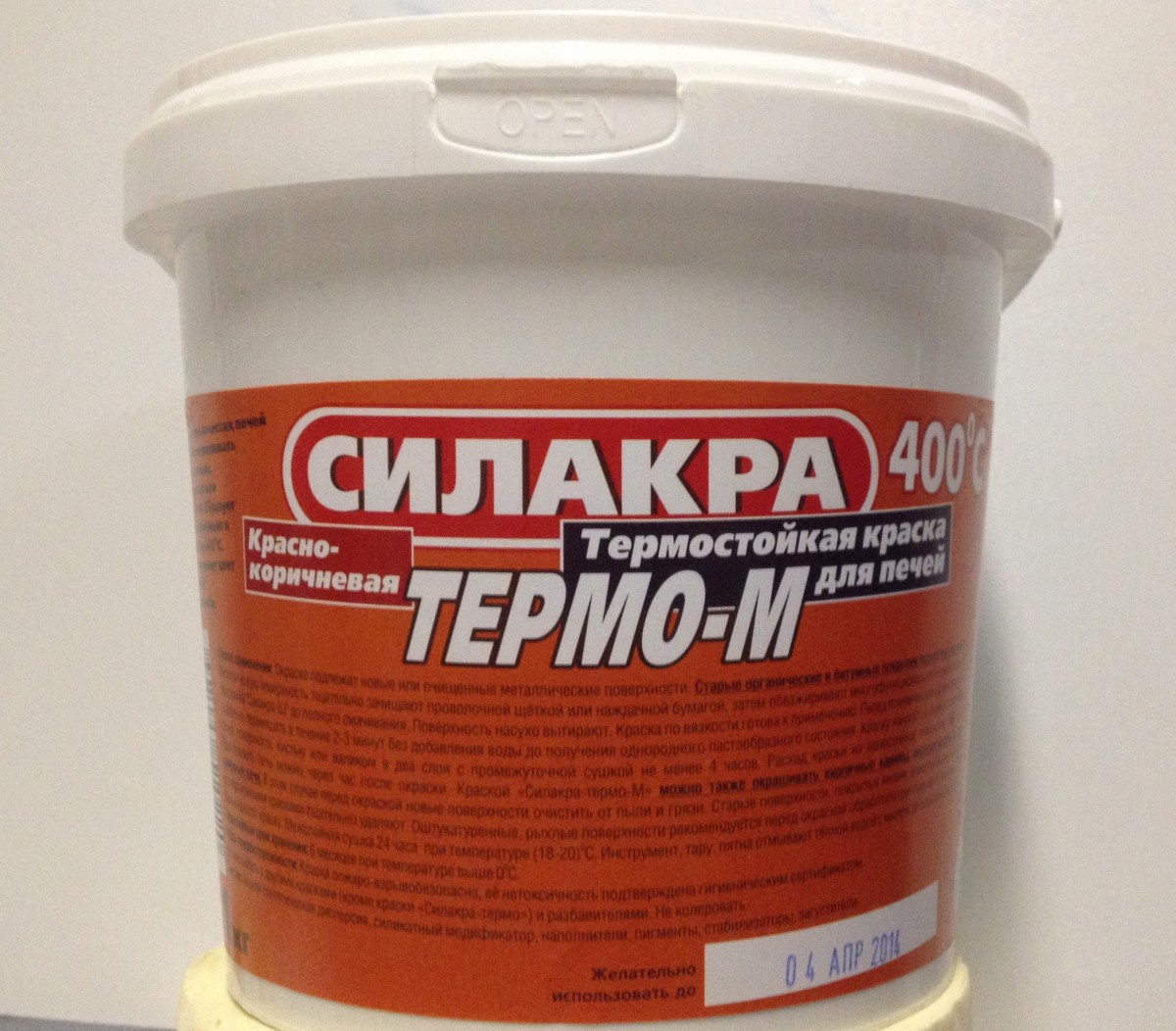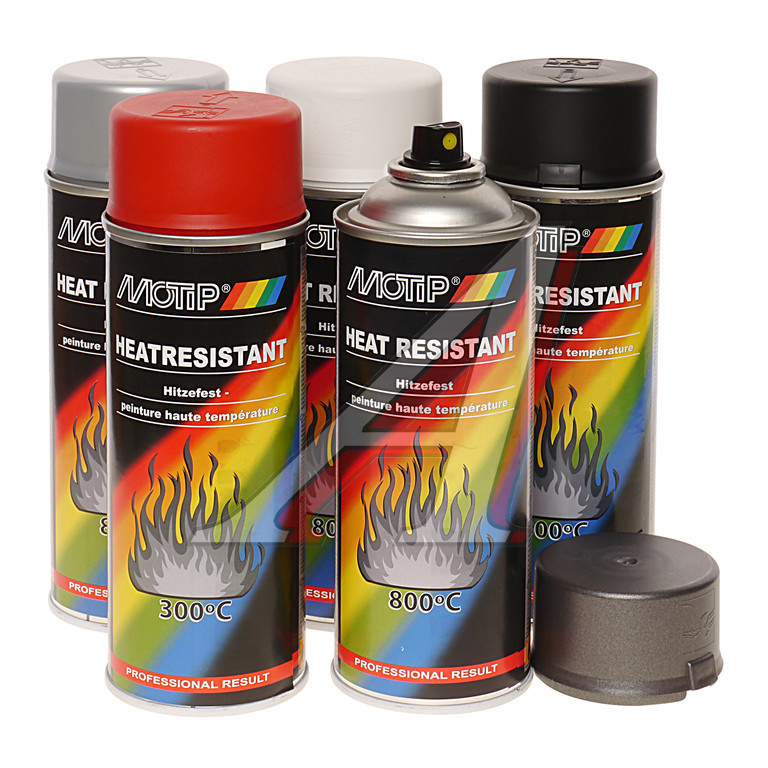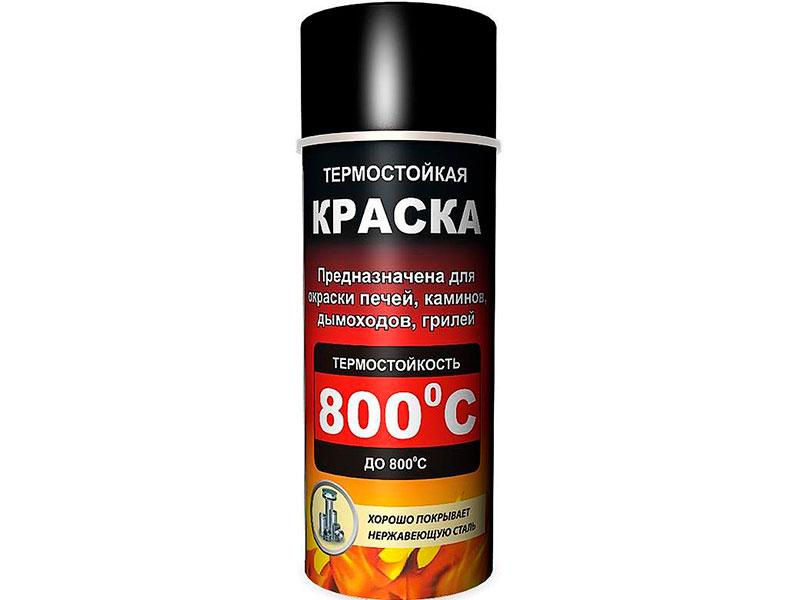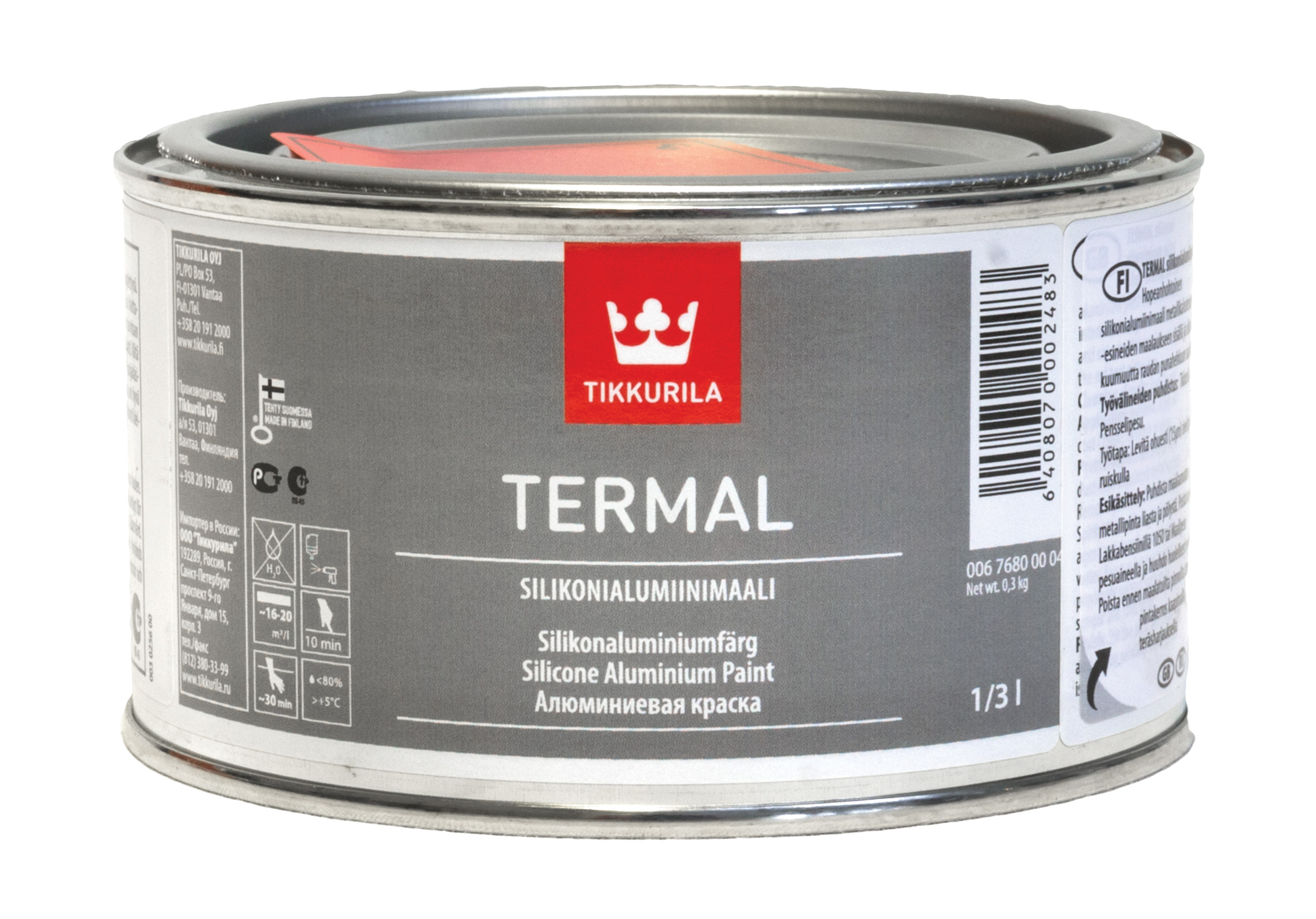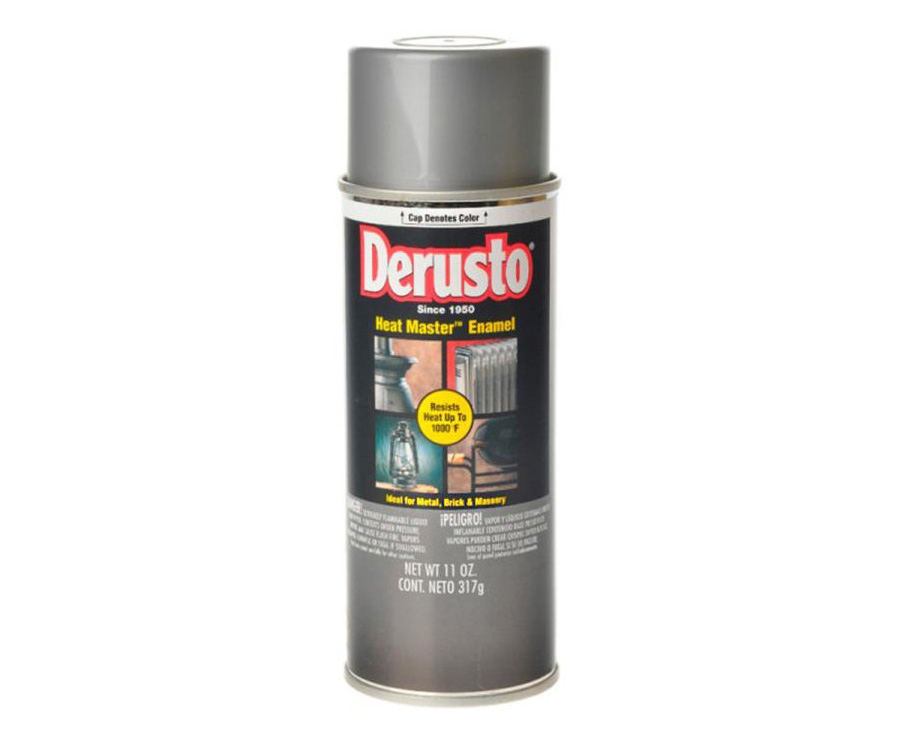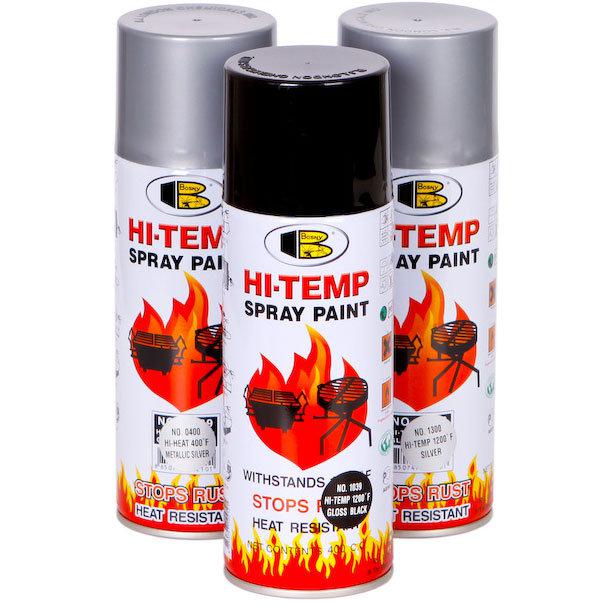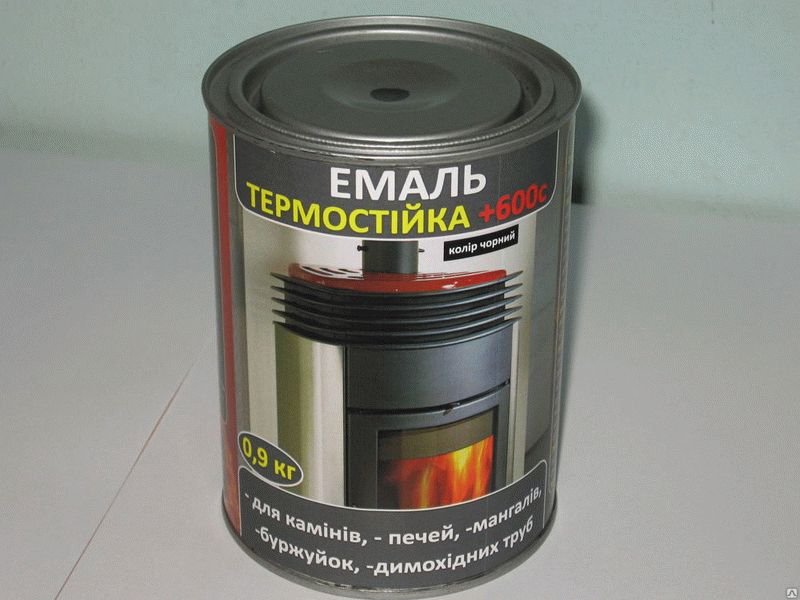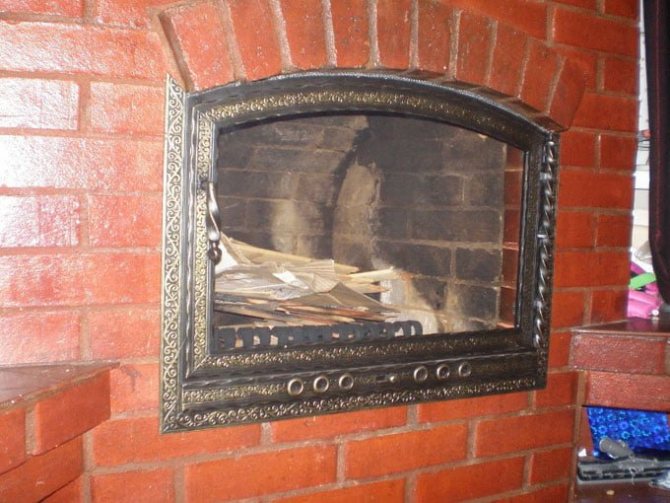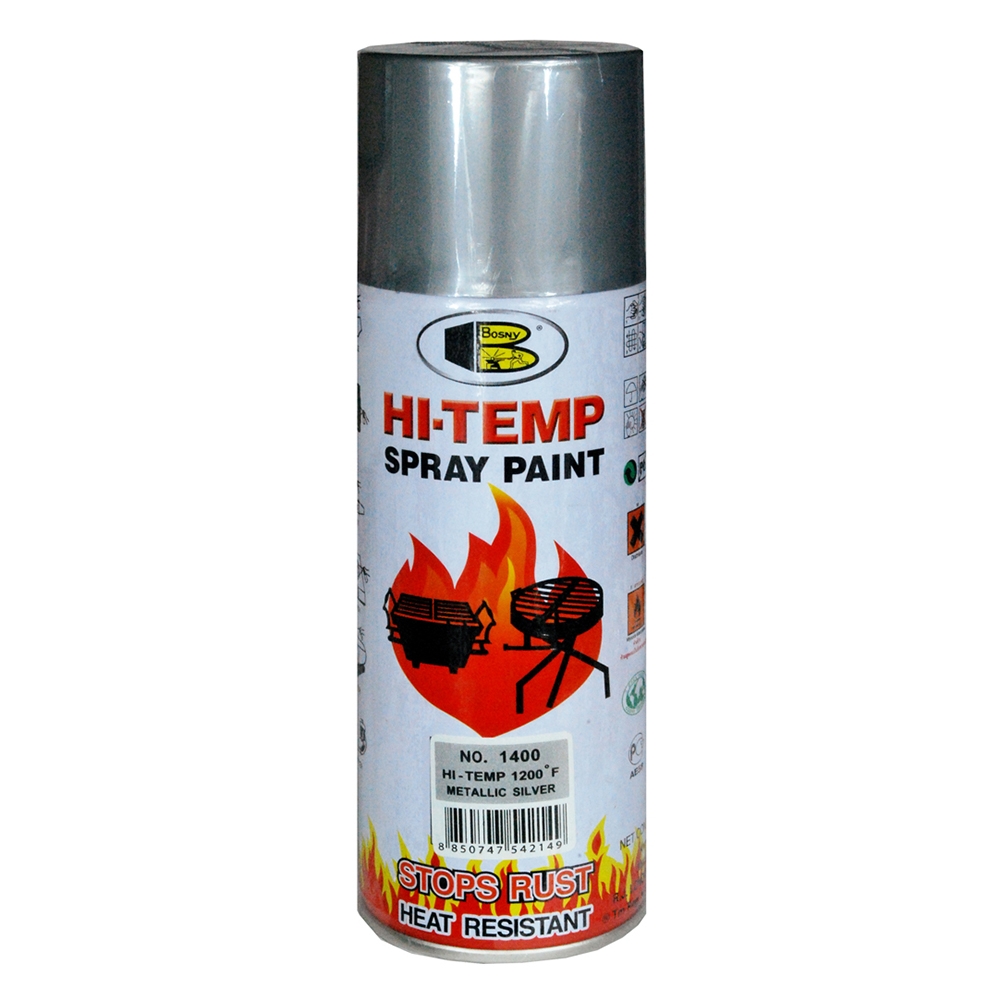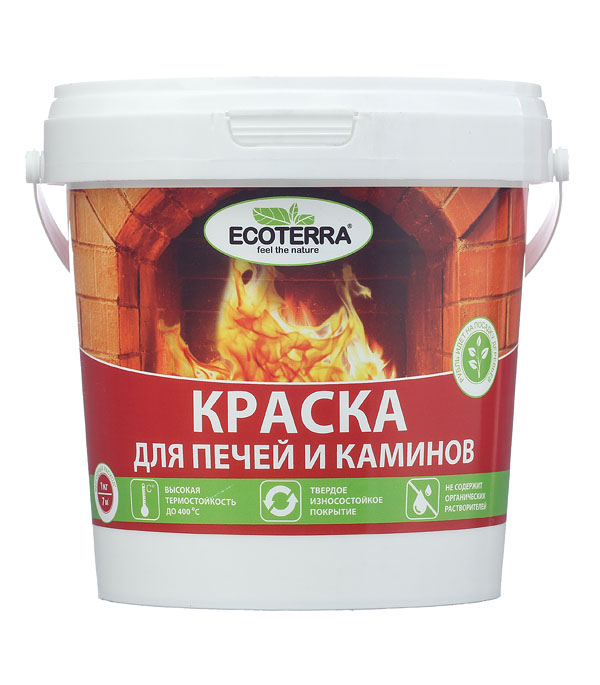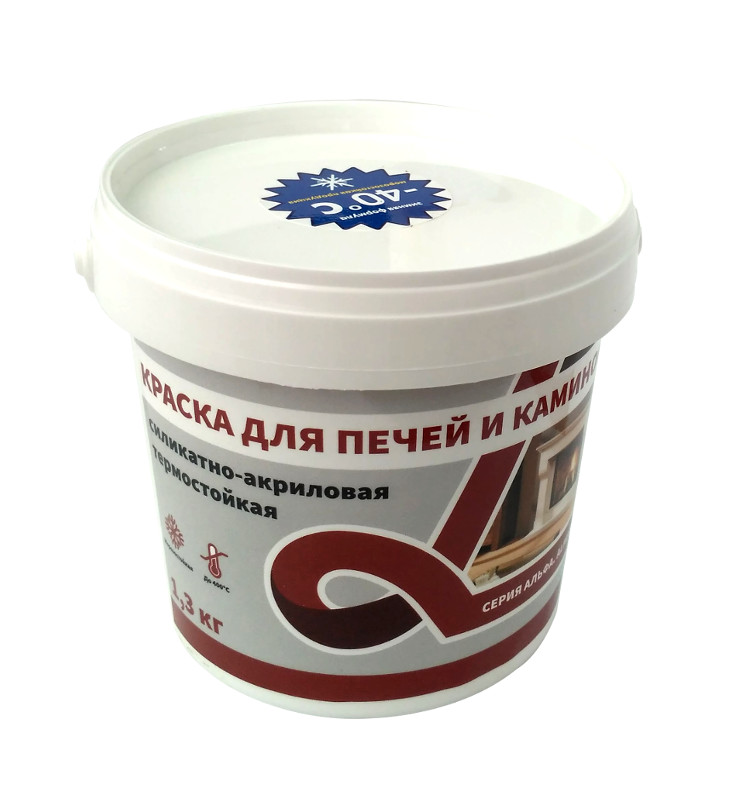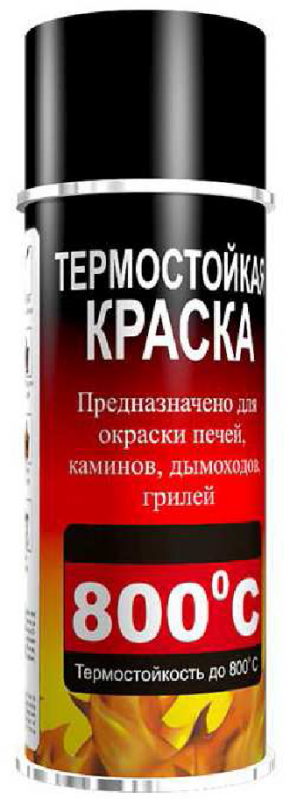Application area
Heat-resistant paints are widely used in mechanical engineering, chemical, metallurgical and oil and gas industries. They are also used in the energy complex and fire-prevention finishing of evacuation routes in civil buildings. They are used for painting heating elements and heating metal structures in factories or in private ownership.
Since heat-resistant compositions have weather-resistant characteristics, they can be used for painting main heating and gas pipes, moving parts of vehicles. Often they cover calipers, mufflers, car drums.
Heat-resistant dyes are used in the heating system for the protective treatment of pipes, chimneys, radiators, fireplaces, brick ovens, heat exchangers, metal boilers and stoves. Furnace elements made of cast iron - handles, doors, frames, dampers are covered with an additional protective heat-resistant layer. For these parts, a paint corresponding to the temperature effect is selected from +600 degrees.
In household use, paints can be used to cover electric and gas stoves, electric dryers, boilers, water heaters. For heating boilers and elements in steam rooms, saunas and baths, only heat-resistant dyes are used. Heat-resistant varnishes are used for processing wooden structures. For painting barbecues, barbecues and grills, they acquire compositions that are resistant to high temperatures up to +800 degrees.
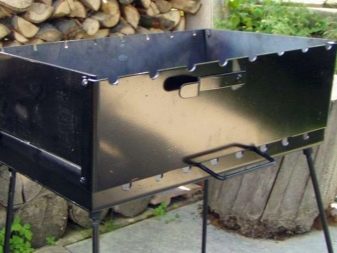
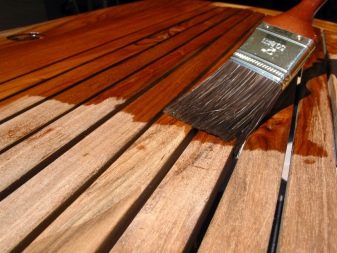
Compositions for concrete and ceramics can withstand temperatures of +300 degrees. These dyes are used to paint brick chimneys, stoves and fireplaces made of brick, stone, granite. For mineral surfaces the paint consumption is higher.
Special heat-resistant alkyd compounds with the addition of reflective particles are used to apply road markings. The painted layer has increased resistance to abrasion, chemicals and moisture. In the dark, the color marking serves as a light reflector for vehicle headlights.
Features of the choice of paint for the oven
You cannot paint a stove with simple paints: the highest temperatures that they can withstand are 45-55 ° C. During the first firebox, this coating will swell, change color before our eyes, bubble up, and also spread “aromas” and smoke. Therefore, special formulations are definitely needed that can withstand elevated temperatures.
The degree of heat resistance required will depend on the type of oven. If it is a metal stove, then it can heat up to more than 700-900 ° C: the temperature is higher in the combustion zone, but taking into account the design, the outer walls may not heat up so much. For the outer surface of the brick, increased indicators are not required - 300 ° C is quite enough.
An important requirement is that refractory metal paint for a furnace must be suitable for internal painting. It is best for sauna stoves that it still protects against high humidity.
Thermal paint terminology for metal
For painting surfaces with elevated temperatures, refractory, heat-resistant and heat-resistant paints are suitable. Do not use fire retardants. Although the name is similar, the purpose of this paint is completely different: when heated to a certain temperature (about 150 ° C), it bubbles, blocking the access of oxygen to the structure, thus preventing its destruction. Quite a useful effect, but not in the case of the stove.
- Heat-resistant paints, as a rule, have a field of application up to 700 degrees.These compounds can be used to paint metal elements of fireplaces and brick stoves, metal heating stoves. It is undesirable to cover the body of metal sauna stoves with these paints, since in some places the temperature rises to 900 ° C. For them, there are heat-resistant enamels that can withstand temperatures up to 1000 degrees.
- Refractory paint for metal can withstand open fire. Their operating temperature is even higher, however, for domestic use, these formulations are unprofitable, since they are quite expensive.
- There are also high-temperature paints that are used to paint heating system radiators. As a rule, they behave normally if they do not heat more than 250 ° C. They can only be used for brick ovens - they are perfect for tinting surfaces or painting joints.
- There are also heat-resistant varnishes. They normally tolerate temperatures up to 300-350 ° C. If a brick is treated with such a varnish, then the surface will become brighter, acquire color and shine.
Application for various surfaces
In order to decide which paint to paint the oven, you need to pay attention to which surfaces this composition is intended for. Often the scope of application is indicated on the packaging in large letters.
For example, refractory paint for metal. If the scope of use is extensive, then it is designated in a smaller print, but it must be on the package, like the brand name. If these data are not available, cancel the purchase. Most likely, this is a fake, and the combination of high temperatures and dubious quality is dangerous to health.
In addition to temperature resistance, paint for a metal bath stove must protect against high humidity. In this case, it will hold on for a longer time.
Color selection
Heat resistant paint is usually found in silver, gray and black. The rest of the shades must be looked for, but they also exist: red, white, blue and green. The coating can be glossy or matte.
Usually matte black thermal paint is found, however some manufacturers have different shades and colors.
Manufacturing form
Thermal paints are made in cans or cans. Accordingly, they can be applied from cans with rollers, brushes or sprayed using special equipment, and sprayed from cans.
Heat resistant spray paint typically has a volume of approximately 500 ml. In cans, usually packing is 0.4-5 kg. There is a larger package in barrels and buckets.
What is more convenient? It's a matter of habit. With dexterity, the layer comes out more even from the can. In this case, the consumption may be less than when using a brush or roller.
Price
The price range for refractory paint is scattered, it all depends on the manufacturer. So the cost of heat-resistant domestic analogs is much cheaper. The price of the product also depends on the composition and temperature regime that the enamel can withstand. The more complex components, the more expensive the paint.
The presented material allows us to conclude that heat-resistant paint is a high-tech product that is harmless to human health. It is widely used in various industries and at home, withstands high temperatures and has good quality characteristics.
Review of heat-resistant enamels (3 videos)
The choice of paint for calipers and application technology
Despite the popularity of heat-resistant metal paint in spray cans due to its low cost, this finish cannot be called the best. Most often, 1 can barely covers the surface of 2 drums. In addition, the technology requires you to carefully close other parts of the car so that they do not get dirty during spraying.
Dye in a can costs a little more than an aerosol can. This mixture allows you to get a clean and high quality finish with a brush.This does not require removing the brake system from the discs. The disadvantages of the formulations in the bank include the long time spent on staining.
Spray paint application allows for even and economical use of the material
Heat-resistant dye kits contain a complete set of products designed for full-fledged painting of metal parts of a car.
Typically, the kit includes the following components:
- a bottle with a liquid for cleaning the surface;
- heat-resistant dye;
- primer composition;
- accessories (brush with stiff bristles, protective gloves).
On average, the staining process, along with waiting for the paint to dry, takes about 2 hours.
The dye is applied in the following order:
- The wheels of the car are removed.
- The calipers are cleaned of rust and dirt.
- The dye is applied to the calipers in two layers.
The calipers are thoroughly cleaned beforehand, after which paint is applied
Wait at least 35 minutes before applying the second layer of material. The most popular and demanded dyes in this segment are OMP, Kerry, Motip, Foliatec and Kudo.
Choosing heat-resistant paint for a barbecue or stove: popular manufacturers
Most consumers prefer to buy Cert dye formulations from the Spectrum company. This type of finishing material is in high demand due to its optimal technical parameters. The coating can withstand temperatures ranging from -65 to 900 ° C. The manufacturer offers an extensive palette of colors, including 25 shades.
Cert temperature range
| Shade of paint | Temperature indicator, ° C |
| black | 900 |
| gold, copper, white, green, blue, turquoise, light blue, brown | 700-750 |
| yellow and other colors of the palette | 400-500 |
The color of the material also affects the cost of the dye, which is in the range of 300-550 rubles. for 800 g.
Thermal alkyd dye from the Tikkurila brand forms a coating on the surface of the material that does not peel off within 3 years. Even if the metal heats up to a red glow, the dye will retain its properties and attractive appearance. The cost of a 330 ml can is 600 rubles. The material has one specific feature. The composition polymerization process is possible only if the treated surface is heated to 230 ° C for 1 hour.
The following types of paints are considered no less high quality: Hansa, Kudo, Bosnia, Hammerayt, Elkon. The recommended number of coats, temperature parameters of application and requirements for the painting process are different for each manufacturer.
To get a high-quality result, it is very important to adhere to the instructions on the package.
Peculiarities
Conventional indoor paints and varnishes are operated at low temperature fluctuations. Heat-resistant paint is able to withstand exposure to high temperatures without degrading the appearance of the surface.
Heat-resistant paint can be called if it can withstand the minimum temperature limits of 100 degrees.
The use of heat-resistant paints and varnishes allows you to achieve the following tasks:
- protects metal surfaces from oxidation and rust;
- provides protection to the painted material for a long time, prolongs the service life;
- forms a durable moisture-proof film, resistant to abrasion and washing;
- under the influence of heat and temperature extremes, the coloring layer does not bubble, does not crack, does not crumble;
- the painted surface acquires the desired color;
- helps to hide surface defects;
- coloring prevents the destruction of the material under the influence of aggressive chemicals released during combustion;
- the surface acquires electrical insulating properties;
- helps to comply with fire safety requirements, since the heat-resistant layer increases the fire resistance of the material, reduces the deformation of the structure during heating, and improves heat transfer.
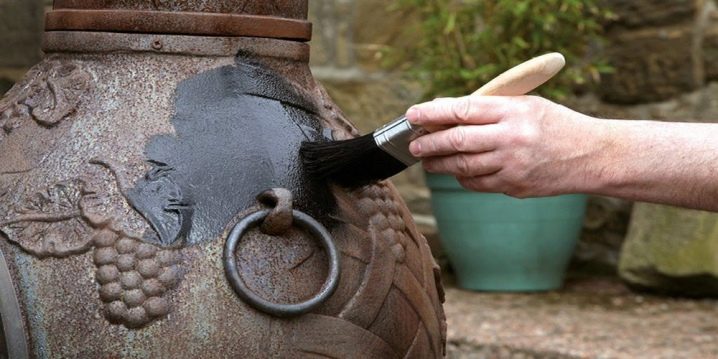
The paint acquires its heat-resistant properties due to its composition. The silicon-based coloring mixture includes fillers, coloring pigments, artificial polymers. A component such as aluminum and zinc powder improves the heat-resistant properties of the paint solution. The addition of organic resins will improve adhesion to the material, increase the elasticity of the layer and increase the drying time.
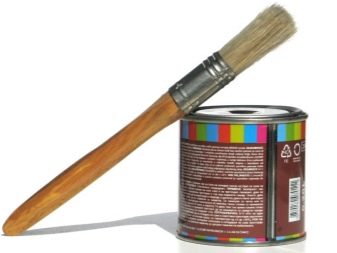
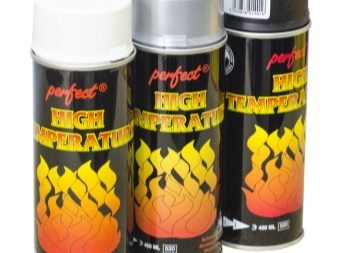
The negative aspects of such paint include:
- long drying time;
- acrid, suffocating odor;
- non-ecological composition.
The dye composition acquires its strength with the correct implementation of the dyeing technology
An important component is the preparation of the painted surface, its cleaning and dust removal. The color consumption depends on the choice of the method of applying the dye mixture.
To apply paint, use a spray, roller or brush. Painting in two layers will increase the reliability of the coating. Do not paint heated surfaces above 40 degrees. Failure to comply with this requirement will lead to cracking of the coating and deterioration of quality characteristics.

Classification and composition
Fire-resistant paints and varnishes are classified according to various parameters.
By composition
- Alkyd or acrylic are household compounds that can withstand temperatures of no more than 80-100 degrees. They may also contain zinc compounds. Designed for application to heating radiators or boilers;
- Epoxy - resistant to temperatures of 100-200 degrees. These compounds are made using epoxy resin. It is not necessary to apply a primer paint before applying epoxy paint;
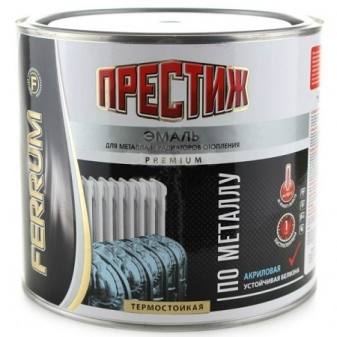
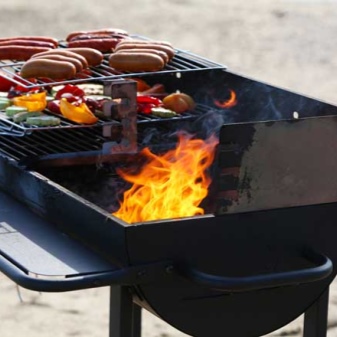
- Epoxy ester and ethyl silicate - resistant to temperatures of 200-400 degrees, made on the basis of epoxy ester or ethyl silicate resins. In some cases, they include aluminum powder. Suitable for surface application of cooking utensils over a fire, such as barbecues or barbecues;
- Silicone - resistant to temperatures up to 650 degrees. The composition is based on polymer silicone resins;
- With composite additives and heat-resistant glass. The limit of heat resistance is up to 1000 degrees. Most often used in industry.
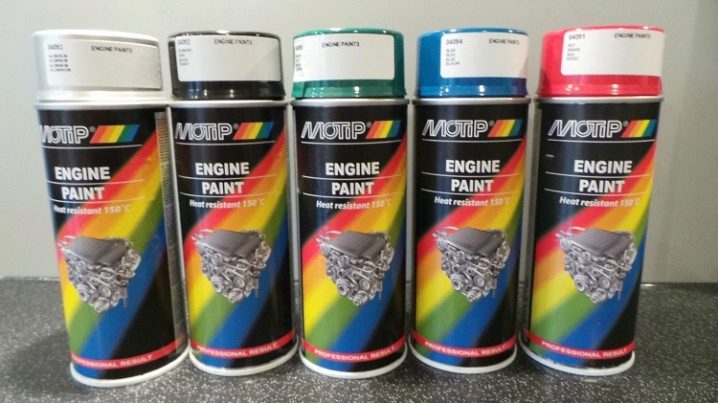
By the appearance of the formed coating
- Glossy - forms a shiny surface;
- Matte - creates surfaces without shine. More suitable for surfaces with irregularities and imperfections, as they help to hide them.
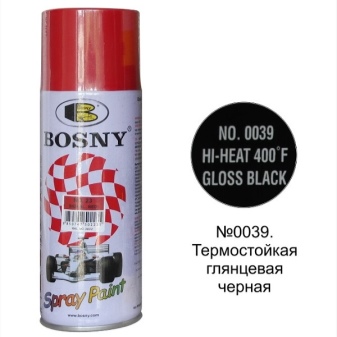

By degree of protection
- Enamel - forms a glassy decorative layer on the treated surface. It is flexible enough, but creates an increased risk of fire spreading during a fire;
- Paint - forms a smooth decorative layer with higher fire retardant qualities;
- Varnish - forms a transparent glossy coating on the surface. Has high protective properties when exposed to open fire.
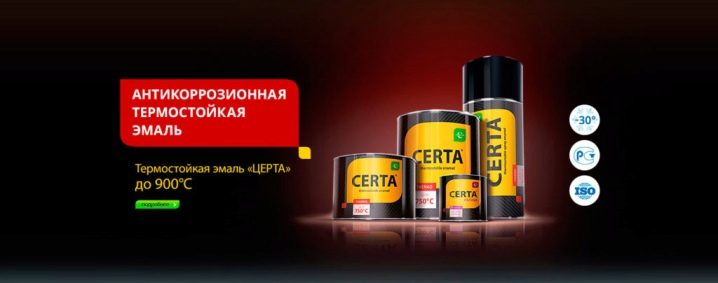
By marking
- KO-8111 is a dye intended for application to metal surfaces that are heated to 600 degrees. Has a high degree of resistance to aggressive environments;
- KO-811 - a dye used for processing steel, titanium and aluminum surfaces, forms a strong anti-corrosion, heat and moisture resistant, environmentally friendly, resistant to thermal shock coating, which becomes even denser with increasing temperature;
- KO-813 - a dye used for application on metal surfaces heated to 60-500 degrees, has high anti-corrosion characteristics, is resistant to temperature extremes;
- KO-814 - designed for surfaces heated to 400 degrees. Frost-resistant, resistant to the action of petroleum products, mineral oils, salt solutions.Most often used for painting steam lines.
Specifications
In normal situations, fireproof paint does not differ much from the standard one, the difference begins to appear only with a significant increase in temperatures, when the surface layer is heated. This circumstance becomes a catalyst for the synthesis of porous oligomers and their curing. The speed of the processes is determined by the nuances of the chemical composition, the features of the application and the degree of heating. The process itself will be like this:
Refractory paint gives off gaseous products that start the subsequent process and prevent the temperature from breaking down the coating layer. Phosphoric acid is released, forming coke foam. The foaming agent is destroyed, which, under the influence of the rising temperature, is filled with a cushion of gases, which prevents heating.
Chemical decomposition of substances containing phosphorus: the top of the reaction occurs when heated to 360 degrees.
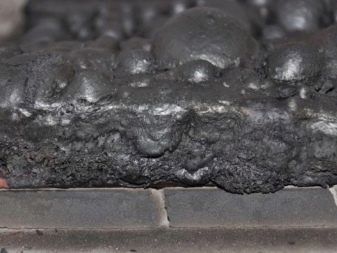
Pyrolysis of network structures. In heat-resistant paint, it starts at 340 and goes on when heated to 450 degrees with intensive foaming of the protective layers.
At a temperature of 200 degrees, the metal is strong enough, but as soon as steel is heated to 250 degrees, it loses its strength very quickly. When heated to high temperatures - 400 degrees and above, the smallest loads can damage the structure. But if you use good paints, you can maintain the basic qualities of the metal even at 1200 degrees. The standard of protection is the preservation of basic qualities up to 800 ° C. How much paint can maintain its qualities is determined by its chemical composition and purpose.
So far, technologists have created 7 categories of fire protection, the differences between them are expressed in the duration of fire resistance. The 7th grade means that the protection works for a quarter of an hour, and the highest level - 2.5 hours. Heat-resistant paint is usually able to withstand heat up to 1000 degrees. It is these coatings that are applied to heating equipment and other heating systems of a similar purpose.
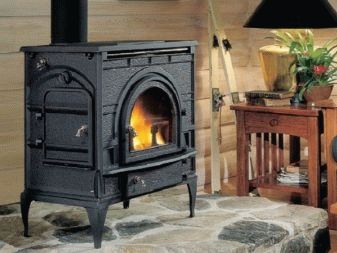
The symbols on the labels help to find out the real parameters. To provide sufficient protection for the barbecue, various additional components are used - oxygen, silicon, organic substances and aluminum powder.
The purpose of high-temperature compositions is to paint radiators and transport engines, the joints of the masonry of brick ovens. If the heating is not too high - as on the parts of a gas boiler - heat-resistant varnishes can be used, which do not lose their appearance at temperatures of 250 and even 300 degrees.
Heat-resistant paint can be made from alkyd, epoxy, composite, silicone components. Also, chemists have learned to use ethyl silicate, epoxy ester combinations and a number of dyes based on heat-resistant glass for such purposes.

When choosing, always ask how the fire-resistant composition is susceptible to cracking and other mechanical defects. After all, because of them, significant problems can arise at a critical moment ...
How to paint a brick fireplace with your own hands
Painting a brick fireplace is not difficult, it is important to correctly carry out the preparatory measures. It is necessary to adhere to the dyeing technology
Preparation of the base
To obtain a high-quality uniform coating, you must perform the following steps:
Free the treated surface from dust particles, various kinds of contamination
Particular attention should be paid to the cooking and heating unit, as greasy stains often remain on it. To get rid of deep dirt, effectively use hot water in conjunction with baking soda
First, a soft napkin is immersed in a container with liquid, and then in soda, and applied to the problem area. Do such approaches until the greasy contamination is removed. At the end of the water procedures, the surface should dry well.
Clean cast iron elements with a wire brush, abrasive paper. Then wipe with a damp cloth and dry. If necessary, a solution of copper sulfate (10%) is used against rust.
Heat the fireplace before painting and let it cool to a warm state.
Of the tools you will need:
- brush;
- roller;
- spray;
- soft napkin;
- water;
- copper sulfate;
- sulphuric acid.
Brick fireplace painting
To paint a red brick fireplace, you should prepare the composition according to the manufacturer's instructions, all information is contained on the packaging. There are materials that need to be diluted with solvents, and there are paints that are applied at certain temperatures.
Painting of a fireplace, stoves is carried out according to the following scheme:
- A thin layer of paint is applied to the surface.
- The procedure is performed in 2-3 passes with the obligatory drying of each.
- The hearth is heated and cooled to room temperature. Apply the finishing layer of the paint composition.
If you add a symbolic ornament, then the fireplace will acquire individuality. The main thing is that the painted base does not shine through, it is uniform. It is not necessary to use a primer after plastering the oven, since most bonding compounds are not able to withstand extremely high temperatures. Looking through the photos of painting a brick fireplace, you can make sure that all the work can really be done with your own hands, without the involvement of specialists.
Important! Apply paint to the surface of a fireplace or stove only in a well-ventilated area, using protective gloves. Especially you need to be careful not to accidentally get the composition on the skin, mucous membranes of the eyes
No. 2. What are the varnishes by composition
Brick varnish - a universal product for protecting brick base
But in order for the varnish to lie flat on the material and fully perform its functions, it is necessary to choose it correctly, paying attention to its composition
Polymer varnishes
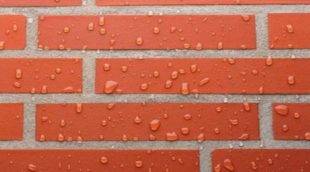
This is the most popular type of paintwork materials. The demand for this product is due to its versatility. It can be used on brick and concrete substrates. Polymer varnish can be applied at sub-zero temperatures and in rooms without heating. It is easy to apply, dries quickly and reliably protects the material from scratches, cracks, moisture and dust. The mixture can be used to protect interior and exterior walls. Due to the ease of application of the polymer composition, it can be used by both professional craftsmen and beginners. Polymer varnishes are affordable.
Silicone acrylic varnishes
This type of paintwork is suitable for interior walls. Silicone-acrylic mixture can be used to cover not only bricks, but also concrete, ceramic tiles, drywall, metal. The composition is often used for application to decorative items.
Due to the presence of special polymers in the mixture, the varnish can be of various shades. In addition to the protective layer, the wall treated with this compound can be transformed into any color, depending on your wishes.
Silicone-acrylic varnish protects the base from alkalis, acetone, oils. The only disadvantage of such mixtures is the price, which is much higher than polymer analogues.
Polyurethane varnishes
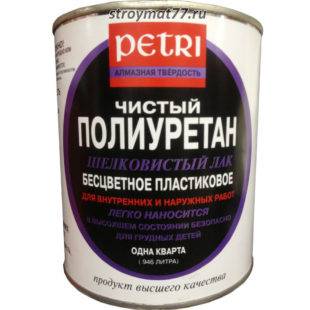
It is a versatile product that can be used to coat interior and exterior walls. It is the polyurethane varnishes that create the “wet” effect on the brick base. They have excellent moisture-repellent characteristics, which is why they are most often purchased for treating external walls. The popularity of polyurethane varnishes is also explained by the fact that they can be used to process not only brick, but also concrete bases.
Heat-resistant varnishes for fireplaces and stoves
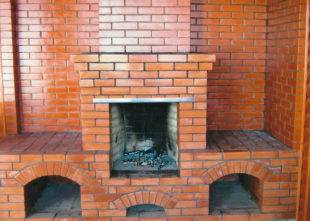
This is a separate category of paintwork materials, which differ in the characteristics of heat resistance, fire resistance.They are designed to prevent condensation from forming on the walls of stoves and fireplaces. Due to their high moisture resistance, such paints and varnishes are also purchased for decorating and protecting building facades.
Solvent varnishes
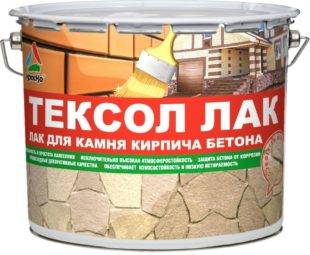
These formulations are based on silicone resin and solvents. When penetrated into the material, they create a strong protection, preventing cracking and discoloration
But, at the same time, such varnishes are easily flammable, and it is necessary to work with them extremely carefully, observing safety rules
Impregnations

In order to strengthen any paint and varnish, you can use special sealing impregnations. They are made on the basis of silicone and acrylic resins with the addition of aromatic, aliphatic solvents. Due to this composition, maximum protection of the paint and varnish for the brick base is provided. When using impregnation, deep penetration of paintwork materials into the building material is guaranteed.
In addition, sealants provide an extra layer of protection against seasonal rainfall, chemicals and UV rays. Many manufacturers also offer decorated options with a "wet stone" effect. The negative side of such impregnations is their use only for external or internal walls; they cannot be used in work with stove and fireplace installations.

